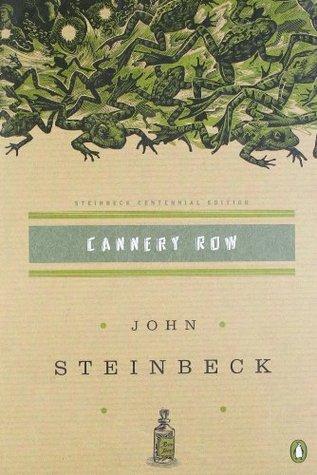
I loved this novel about a small community in Monterey, California. I think I expected something more industrial from the title – Cannery Row refers to Monterey’s cannery district, where most of the men of this town make their living. But it’s also an ode to the natural beauty of coastal California, something that really resonated with me. Which is not to say that life in this time and place is easy. This is a book about people living on the outside of society, getting by with what they have. Doc is a gentleman who makes a living collecting animal and plant samples for laboratories and classrooms. Lee is a Chinese-American who owns the local grocery store. Dora runs the brothel, and Mack leads a group of guys who live in an abandoned warehouse.
What might feel stereotypical and cliché is in fact exactly the opposite. Steinbeck’s characters leap off the page, each of them having strengths and flaws. This is a male-centric story, while I would have liked more female characters, but nothing about the book felt sexist or racist. Instead it felt like a place Steinbeck must have lived in, people he must have known.
Cannery Row in Monterey in California is a poem, a stink, a grating noise, a quality of light, a tone, a habit, a nostalgia, a dream. Cannery Row is the gathered and scattered, tin and iron and rust and splintered wood, chipped pavement and weedy lots and junk heaps, sardine canneries of corrugated iron, honky tonks, restaurants and whore houses, and little crowded groceries, and laboratories and flophouses. Its inhabitant are, as the man once said, “whores, pimps, gambler and sons of bitches,” by which he meant Everybody. Had the man looked through another peephole he might have said, “Saints and angels and martyrs and holymen” and he would have meant the same thing.
John Steinbeck, Cannery Row
In some ways, this is told in a series of vignettes, though there’s a loose story to it, with Mack and Doc at its center. Doc is a solitary guy but one many of the town turn to for advice and support. Mack decides one day he’d like to show Doc how much the town cares for him. He and his guys decide to throw Doc a party.
Mirroring the theme of natural beauty, I found great beauty in the way Steinbeck describes the relationships among these characters. Their life is hard but they all support each other in various ways. Lee Chong can supply every need, and though he’s hard on creditors he’s also understanding. Dora won’t kick a girl out even if she can no longer work. Doc is no doctor (he’s a biologist) but he gives advice when he can. And Mack looks after the guys in his gang, as kind of a father figure or a big brother to young men who don’t seem to have anywhere to go.
At the same time, there are odd moments of violence throughout this book – in keeping with a general theme that nature (and man) might be beautiful at times but also hard-edged. Doc’s house is full of strange specimens in jars of formaldehyde. Yet he’s rattled when he finds the body of a girl in the water when he’s collecting specimens. A boy who is mentally disabled is punished for a crime he doesn’t understand.
I was already a big Steinbeck fan. I loved East of Eden, with its big family drama and themes of morality, redemption and love. This book was very different, but I enjoyed it just as much. It’s got a more intimate feel to it, like these are people you’re invited to get to know for a short time.
Thanks to Kristin Kraves Books for the recommendation and 20 Books of Summer for the motivation to read this. I’m planning to be in Monterey and Carmel in a few weeks and I look forward to learning more about the place and the novel.

